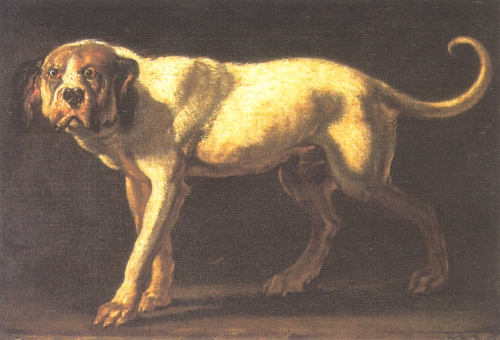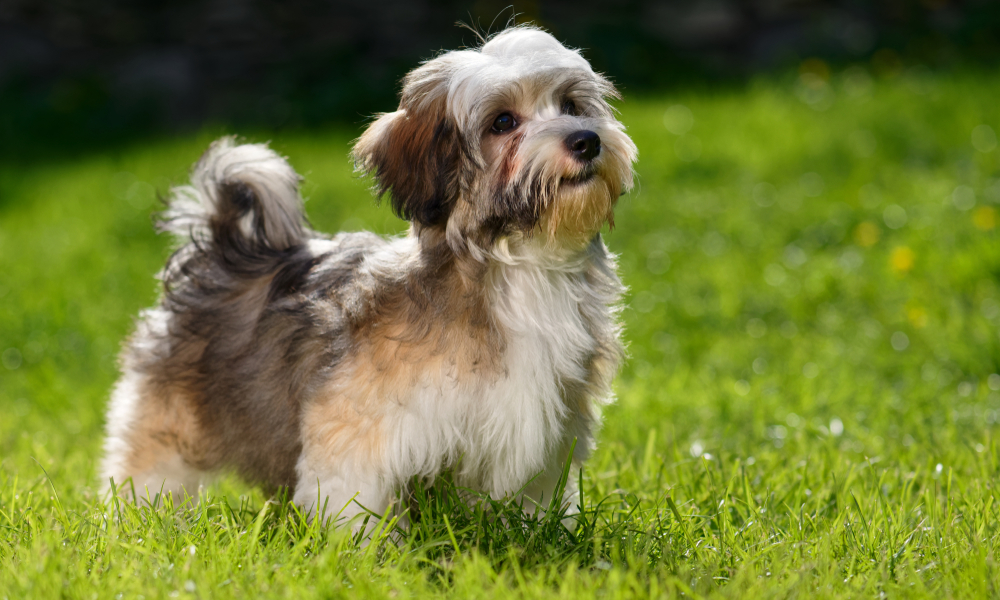Dogo Cubano

Other names : Cuban doggie, Cuban bloodhound, Cuban mastiff.
Origin Cuba
Breed status Extinct
The domestic dog (Canis lupus familiaris)
Dogo Cubano, Cuban dog, Cuban bloodhound and Cuban mastiff are named for an extinct landrace or breed of domestic dogs from Cuba. It was of the dog sub-type of bullmastiff dog type, which as a general class was used for bull and dogfighting.
The variety was introduced in Cuba to capture runaway slaves (cimarrones). After the abolition of slavery, they ceased to exist as a distinct population over time.
Appearance
They were between a bulldog and a mastiff in size. The muzzle was short, broad, and abruptly truncated. The head was broad and flat, and the lips, deeply pendulous. The medium-sized ears were also partly pendulous, the tail rather short, cylindrical, and turned upwards and forwards towards the tip. They were described as a “rusty wolf-colour”, with blackface, lips, and legs. They were very notable for their chasing of slaves.
History
The Cuban mastiff developed from several breeds of bulldogs, mastiffs and cattle dogs, becoming an ideal fighter and property guardian. It is possible that some specimens of this breed were brought to America, where they were employed as watchdogs. They were also used as slave retrievers by the British during the Second Maroon War, by the French during the Saint-Domingue expedition, as well as the Americans in the Southern States.
The breed has been considered extinct since the end of the 19th century, but there have been reports which state that, although no pure dogos cubanos remain, the dogs used in today’s fighting pits in Cuba are descendants of crossbreeding between various pit bull-type dogs, Cordoba dogs, the Dogo Argentino breed, and the few pure dogos cubanos that were left by the beginning of the 20th century. The modern partial-descendants of this extinct dog are much larger and stronger than the original and resemble the American Pit Bull Terrier breed.
Havanese Dog Breed

Havanese (a bichon type dog) is the national dog of Cuba, developed from the now extinct Blanquito de la Habana (“little white dog of Havana”). The Blanquito descended from the also now-extinct Bichón Tenerife. It is believed that the Blanquito was eventually cross-bred with other Bichon types, including the poodle, to create what is now known as the Havanese. Sometimes referred to as “Havana Silk Dogs”, this was originally another name for the Blanquito de la Habana.
The Havanese is small in size and sturdy in structure with a tail carried over its back and ears that drop and fold. The coat is abundant, long, and silky and comes in all colours. The Havanese has a spirited personality and a curious disposition and is notable for its springy gait, a characteristic that distinguishes the breed from all others. The Havanese is considered an ideal family pet and a true companion dog. They are highly adaptable to almost any environment. Because of their strong social needs, Havanese will not thrive in an environment where they are isolated for several hours each day.
The Havanese is a member of the Bichon family of dogs. The progenitors of the breed are believed to have come from Tenerife. Ship manifests from Tenerife bound for Cuba list dogs as passengers brought aboard, and these dogs were most probably the dog of Tenerife. Some believe the entire bichon family of dogs can be traced back to the Tenerife dog, while others theorize that the origins are in Malta, citing the writings of Aristotle, and other historical evidence of the early presence of such dogs in Malta. Whatever the actual origins of bichon dogs, these little dogs soon became devoted companions to the Spanish colonists in Cuba and were highly admired by the nobility.
As part of the Cuban Revolution, upper-class Cubans fled to the United States, but few were able to bring their dogs. When American breeders became interested in this rare and charming dog in the 1970s, the US gene pool was only 11 dogs. The American Kennel Club (AKC) only officially recognized the Havanese breed in 1996.
With dedicated breeding and the acquisition of some new dogs internationally, the Havanese has made a huge comeback and is one of the fastest-growing breeds of dogs in the AKC. The 2013 AKC statistics rank the Havanese as the 25th most popular pure-breed in the United States, a rise in popularity from 28th place in 2012.
